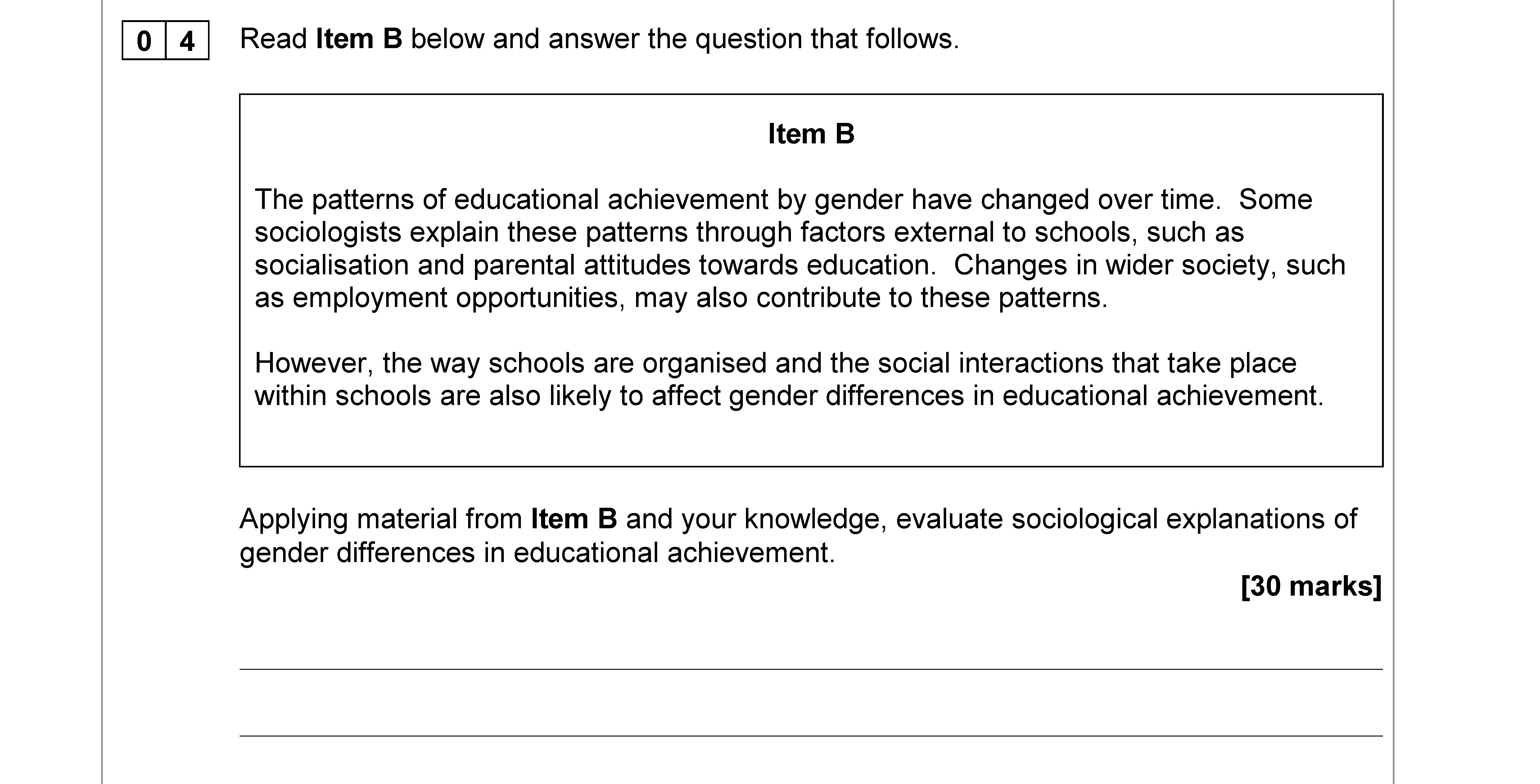Photo AI
Applying material from Item B and your knowledge, evaluate sociological explanations of gender differences in educational achievement - AQA - A-Level Sociology - Question 4 - 2020 - Paper 1
Question 4

Applying material from Item B and your knowledge, evaluate sociological explanations of gender differences in educational achievement. Item B The patterns of educa... show full transcript
Worked Solution & Example Answer:Applying material from Item B and your knowledge, evaluate sociological explanations of gender differences in educational achievement - AQA - A-Level Sociology - Question 4 - 2020 - Paper 1
Step 1
Evaluate sociological explanations of gender differences in educational achievement.
Answer
Sociological explanations for gender differences in educational achievement can be categorized into various approaches. One prominent theory is gender socialization, which suggests that from a young age, boys and girls receive different messages about education and their roles in society. Consequently, girls may be socialized to prioritize academic success more than boys, leading to improved educational outcomes.
Another critical aspect is parental attitudes. Research indicates that parents may hold different expectations for their sons and daughters, often encouraging girls to excel in their studies while being less demanding of boys. This disparity can directly influence the academic aspirations and performance of students.
Examining structural factors, such as changes in the labor market, reveals that as women increasingly enter the workforce, the importance placed on educational attainment has grown. This shift encourages both boys and girls to strive for educational success, albeit for different reasons based on societal expectations.
The organization of schools and the interactions within them also play a significant role. For instance, the hidden curriculum, which refers to the unspoken values and norms that schools transmit, may inadvertently reinforce gender stereotypes. Single-sex education has emerged as a response to these issues, suggesting that separating genders can mitigate the influence of stereotypes.
Overall, while external factors such as socialization and parental expectations significantly impact gender differences in educational achievement, the social structures within schools also substantially contribute to these disparities.
